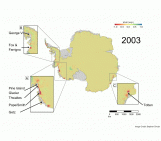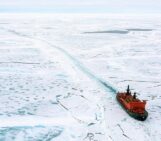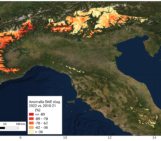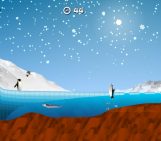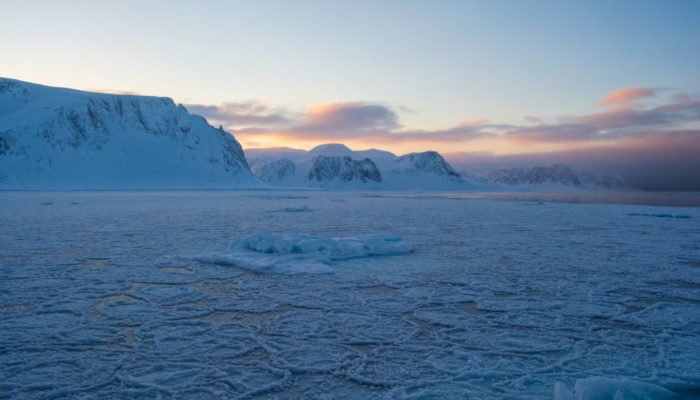
More pancakes in the future – that sounds like a very good New Year’s Eve resolution for Sunday brunches, but it could also be a development of the most tasty looking sea ice shape in the Arctic. Let’s find out more!
Arctic Sea Ice
The growth and melt of Arctic sea ice follows a seasonal cycle. In the springtime, under the midnight sun, the sea ice begins to melt until it reaches its minimum extent in September. When the light slowly disappears in autumn, and temperature drops in the Arctic, new ice formation sets in and builds up sea ice over the winter until the next melting season starts.
But there isn’t just one type of sea ice. Sea ice comes in a lot of shapes and sizes depending on the environmental conditions it is formed under (you can find examples here or here). The particular type of ice we are talking about here (and shown in the photos) is called ‘pancake ice’. Its name comes from its unique and beautiful shape. It is mostly round and has a rim at the edge, exactly like a pancake.
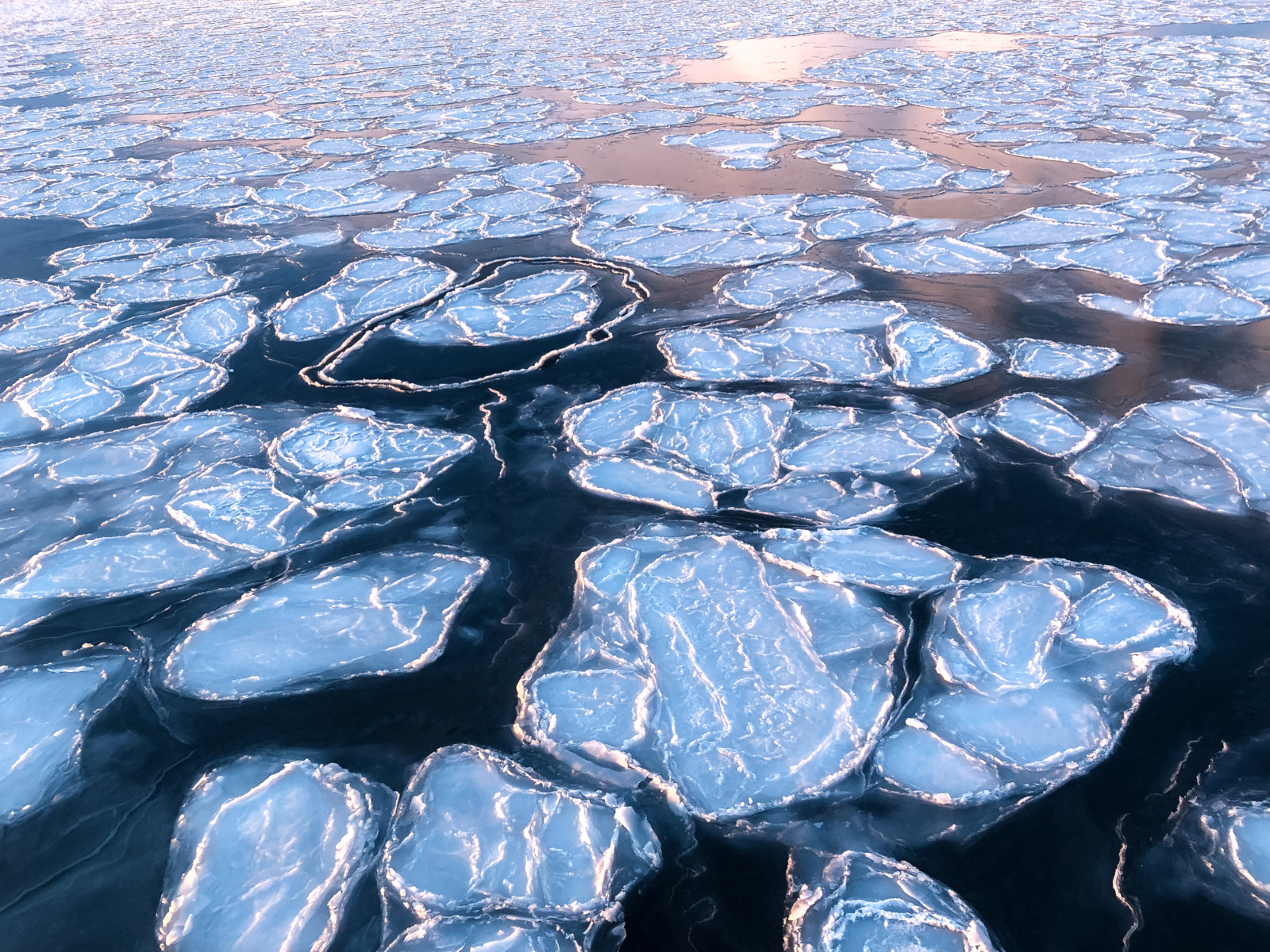
Beautiful pancake ice in the Arctic ocean. Credits: Roxana Cremer.
How is pancake ice formed?
Several steps are necessary to form pancake ice, and the conditions of the environment need to be just right. Pancake ice ranges in size and shape and can form ice floats with a diameter from 20 cm up to 3 meters. They form in two main ways: (1) in very cold water, or (2) at the ice edge with wind and waves present.
The first way of producing pancake ice requires the initial formation of frazil ice. Frazil ice is composed of ice needles each roughly 2-5mm in length, which start to appear at the ocean surface when the temperatures are below 0°C. With time, the needles merge together to form small plates and clumps, ultimately forming a thin slushy layer. This is called grease ice.
When wind and waves are present, the grease ice is moved backwards and forwards, resulting in plates and clumps bumping into and against each other. During this ongoing process, the signature look of the pancake is formed. Here, the collision and thermodynamic processes that occur within grease ice form the plates and with each collision the characteristic ridge is slowly built up. This is very young sea ice which can grow rather quickly and cover large areas of the ocean. Under stable conditions, the pancakes can start to stick together and form a bigger and more stable ice sheet.
For the second way of making pancakes, a thin solid frozen layer on top of the ocean is the starting point. Ocean waves and wind will then break this thin layer of ice and slush into big geometric pieces. With ongoing ocean movements, these bigger pieces continue to hit each other and slowly round their edges. Compared to the first method, this type of pancake ice is not as small, young and perfectly round, but instead is bigger, thicker and more of a polygonal shape.
Why will there be, potentially, more pancakes in the future?
With increasing temperatures in the Arctic over the last several decades, the total area covered by sea ice decreases. The annual timing at which the sea ice reaches its minimum extent shifts to later in the year and the amount of multi-year ice (ice that is built up over several winters) steadily decreases to be almost non-existent. In 2009, a sea ice-free Arctic was ominously predicted to first occur before 2040, a prediction that was echoed in a more recent study (or this blog post). These changes are studied under the term ‘Arctic Amplification’, the retreat in sea ice is well known, the processes well understood. But what the Arctic looks like in the future, after the sea ice is gone, is unknown and only educated guesses can be made.
With increasing areas of open water, stronger winds occur, leading to more frequent and bigger waves in the Arctic Ocean. As mentioned above, this interplay of waves and ice is crucial to the formation of pancake ice. With more wind, the likelihood increases that more pancake ice is formed and the wind and waves break up larger ice sheets into smaller round pancakes. The pancake ice could therefore, as pretty as it is, be seen as another herald of the changes to come in the Arctic.
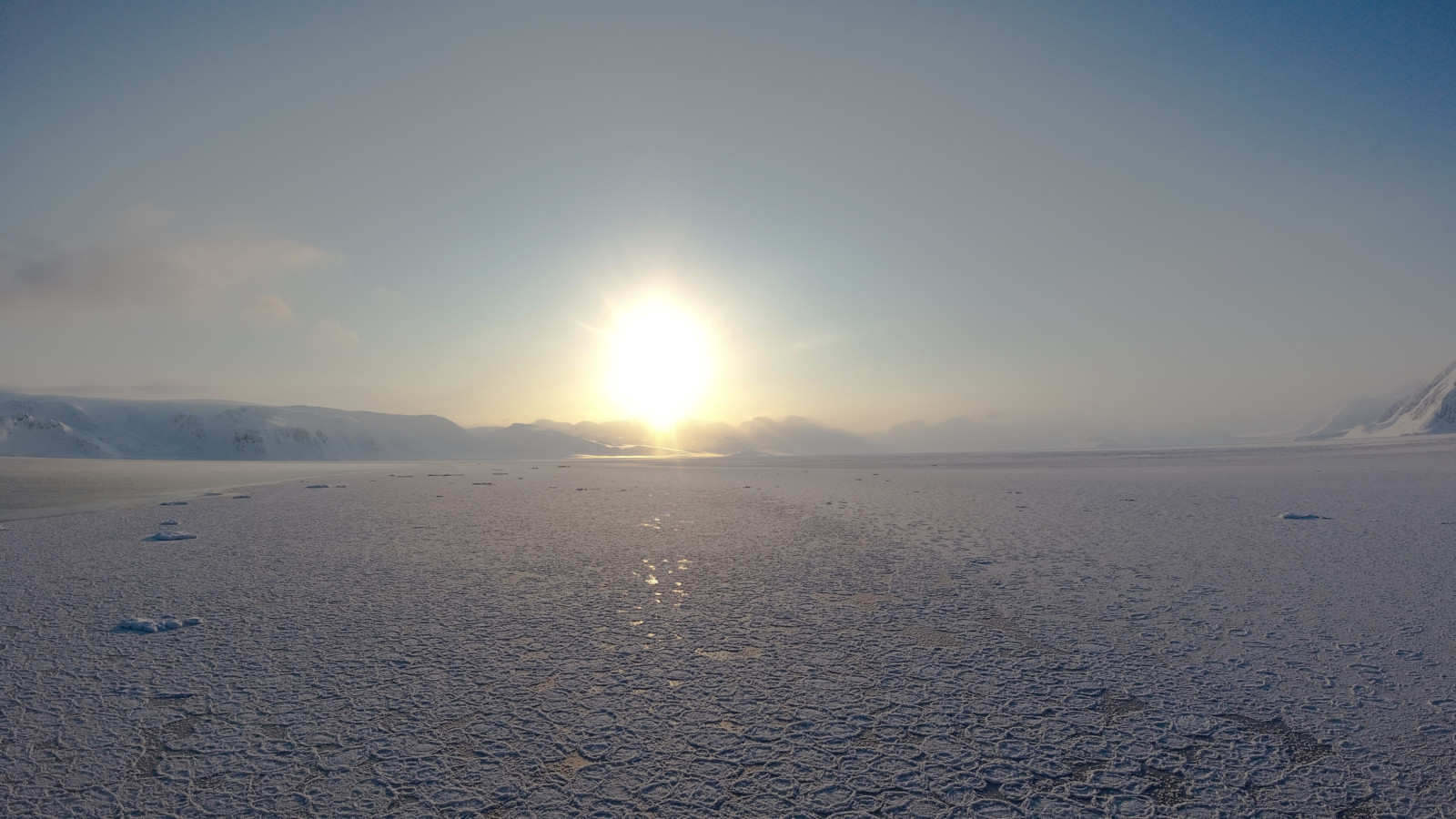
An endless blanket of sea ice extends as far as the eye can see. Credits: Roxana Cremer.
Further reading
- Notz & Stroeve (2018) The trajectory towards a seasonally ice-free Arctic Ocean. Current Climate Change Reports 4:407-416, DOI:10.1007/s40641-018-0113-2.
- Wang & Overland (2009) A sea ice free summer Arctic within 30 years? Geophysical Research Letters 36:L07502, DOI:10.1029/2009GL037820.
Edited by TJ Young and Giovanni Baccolo

Roxana S. Cremer is a PhD Student at the Department of Environmental Science at Stockholm University and active in the AS division. Her research is about the lifecycle of Black Carbon Aerosol in the Arctic. In her free time she loves to go for bike rides and takes wildlife and nature photography. She tweets as @cloudcyclist and is on instagram @cloudcycling.

